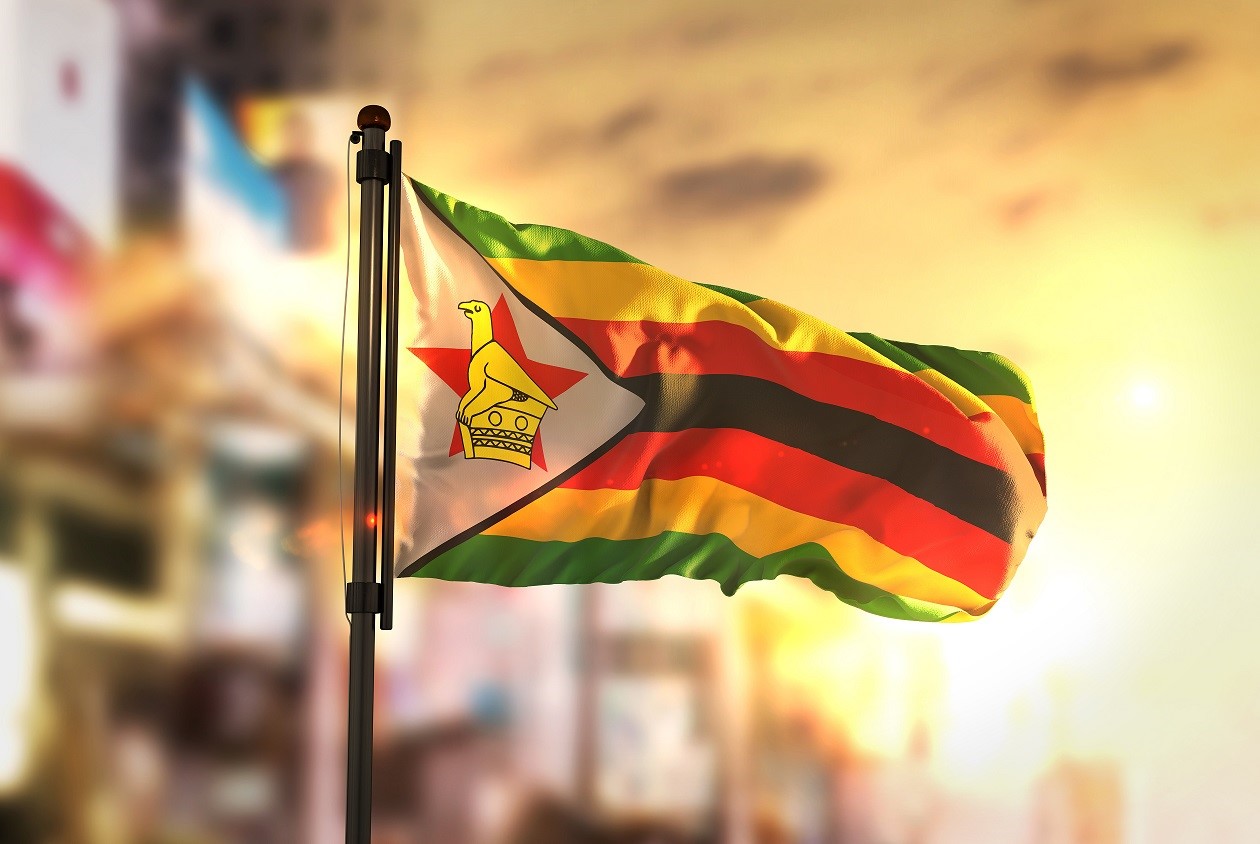
Kenya’s biggest ivory and rhino horn burning ritual on April 30 2016 was done supposedly to send a message to poachers that there is not enough ivory to trade and that there is need to stop illegal trade. More than 100 tonnes of ivory valued at about $29 million, at today’s black market prices went up in smoke.
By Emmanuel Koro

Watching television news on this spectacle, my 12-year-old son, asked an intelligent question that those who burnt ivory and rhino, along with those that support it should now answer. “Why don’t they sell the ivory and help stop rhino, elephant poaching and develop the poor Kenyan villages,” he asked?
One wonders who started and continues to sponsor such unAfrican conservation values and concepts. In the spirit of democratising conservation and development, President Uhuru Kenyatta, along with his ministers and Members of Parliament owe the Kenyan people, in particular and fellow African people in general, an explanation. I am disappointed that fellow journalists from the CNN and Al Jazeera did not say anything to address these questions when they broke the rhino horn and ivory burning news.
Since time immemorial African people have continued to use their wildlife to meet their socio-economic needs. What do Kenyan and African chiefs and kings, who before colonialism were in charge of conserving wildlife (including rhino and elephants) and plant and animal species say about Kenya’s seemingly endless rituals of “conserving” elephants and rhino by burning their stockpile horns?
When such rituals are performed we see names of wealthy Western countries film stars and businesspeople being listed among the guests invited to witness this “conservation” spectacle. Then one wonders if they are the ones who are influencing Kenya to burn its ivory and rhino horn and also compensating it for that. That these powerful and wealthy Western countries businesspeople and film stars, along with animal rights groups might be influencing Kenya to burn its ivory and rhino horn and also compensating it for doing so, now seems an open secret. What remains curiously unanswered is why the sources of ivory and rhino horn burning ritual compensation funds and their use remain undisclosed.
Does failure to control poaching justify ivory, rhino horn burning?
Following its failure to stop rhino and elephant poaching, has Kenya also failed to perform an easier task of protecting its stockpiled ivory and rhino horn?
- Chamisa under fire over US$120K donation
- Mavhunga puts DeMbare into Chibuku quarterfinals
- Pension funds bet on Cabora Bassa oilfields
- Councils defy govt fire tender directive
Keep Reading
It is common knowledge that poachers do not steal stockpiled ivory and rhino horn that Kenya gives 24-hour security. Poachers get ivory and rhino horn by killing rhinos and elephants in the national parks and game reserves. So how does burning ivory and rhino horn that is already stockpiled and protected 24/7 stop poaching?
President Kenyatta, his ministers and Members of Parliament should explain this unscientific “conservation” method to the Kenyan people?
A closer analysis shows there is always fear from Western animal rights groups that if the stockpiled ivory and rhino horn are not destroyed, this might lead to Kenya requesting for a one-sale of ivory and rhino horn in the future.
Such trade is against Western conservation values, particularly those of animal rights groups. They do not agree with the concept of consumptive use of animal products and those of plant species through trade. They also fear without scientific proof; that trade in rhino horn and ivory would increase chances of poaching. It is now common knowledge that Kenya was initiated by the Western animal rights to engage in solitary and very curious ivory burning rituals in Africa. There is no notable scientific evidence to prove that this ever resulted in reduction in poaching levels. But they still claim it did, without backing it with scientific evidence. Therefore, this rhino horn and ivory burning big and costly experiment is not working for Kenya.
Meanwhile, some conservationists have expressed opposition to the burning of ivory in Kenya, the biggest in history. They say destroying so much of a rare commodity could increase its value and encourage more poaching rather than less.
Other African countries such as Botswana, South Africa, Namibia and Zimbabwe that collectively have the largest elephant population in the world and also without doubt, with the largest world stockpiled rhino horn and ivory do not agree with burning ivory and rhino horn.
They would rather keep their stockpiled rhino horn and ivory because they think that a Cites granted strictly controlled trade in these products is possible at an appropriate time, in the future. They also argue that burning ivory and rhino horn is against the principles of sustainable development. They believe in the sustainable use of elephants and rhinos from horn to hoof, to benefit elephant and rhino conservation.
That is why Botswana should be applauded for having refused to attend Kenya’s rhino horn and ivory burning stunt that no doubt also left a bad carbon footprint on April 30, 2016.
Well done President Ian Khama and your ministers and Members of Parliament for not subscribing to rhino and ivory burning rituals that our chiefs, kings and our African people do not and will never support.
One of the arguments that Kenya uses for not supporting trade in ivory and rhino horn is that it gets more money from tourism than it would from ivory and rhino horn sale. It generated $2,3 billion tourism revenue in 2014. The sale of the 105 tonnes of ivory that it burnt would only earn them $29 million, at today’s black market prices.
For that reason, Kenya has continued to fight for a permanent ban on rhino horn and ivory trade. This suits Kenya, but does not suit other countries such as Botswana, Zimbabwe, Namibia and South Africa that might not be in the same situation with Kenya, in terms of tourism earnings and of course conservation values.
So does that mean for the sake of Kenya; Botswana, Zimbabwe, Namibia and South Africa should never be given an opportunity to engage in one-sales of their stockpiled ivory and rhino horn when it becomes appropriate to do so? I doubt. Why? There are already precedents of one-off controlled ivory sales granted by the United Nations Convention of International Trade in Endangered Species of Fauna and Flora (Cites) — that regulates trade in fauna and flora species.
For example, in 1997, recognising that some Southern African elephant populations were healthy and well managed, Cites permitted Botswana, Namibia and Zimbabwe to make a one-of sale of ivory to Japan, totalling 50 tonnes. This sale took place in 1999 and raised $5 million for elephant conservation. In 2008, in Thailand, again two-thirds majority of CITES member countries voted in favour of one-off ivory sales of 105 tonnes for Botswana, Namibia, South Africa and Zimbabwe. The ivory sold was all from legal, government-owned stock; most of it from elephants that died of natural causes as part of a population control programme. All proceeds from the sales were used exclusively for elephant conservation.
What this proves is that Cites is a reputable organisation informed by science and not emotions whipped up by Western animal rights groups that continue to lobby powerful and wealthy businesspeople and also the innocent public there and beyond, to donate funds to stop sustainable use of fauna and flora products. They have always tried to do this without scientific proof and Cites hardly listens to them when their emotional arguments are defeated by compelling scientific evidence in favour of trade.
This time, animal rights groups are coming to South Africa in September 2016 to attend the 17th meeting of the Conference of the Parties (CoP) 17, in Johannesburg, South Africa from September 24 to October 5, 2016. They, as usual, will use the same arguments to permanently stop trade in stockpiled rhino horn and ivory. Is Africa ready to counter their fierce media lobby? Are our journalists informed enough not to be brain-washed to promote Westernised conservation agendas as is happening in Kenya, where rhino horn and ivory is burnt without a single media explanation on how much Kenya was compensated to burn the ivory and rhino horns, by whom and how much of it will go towards elephant and rhino conservation? Watch out for these animal rights groups who mourn the deaths of Cecil and Sylvester the lion, more than they do that of a human being when killed by the very same lions.
● Emmanuel Koro is an environment and development journalist based in Johannesburg









